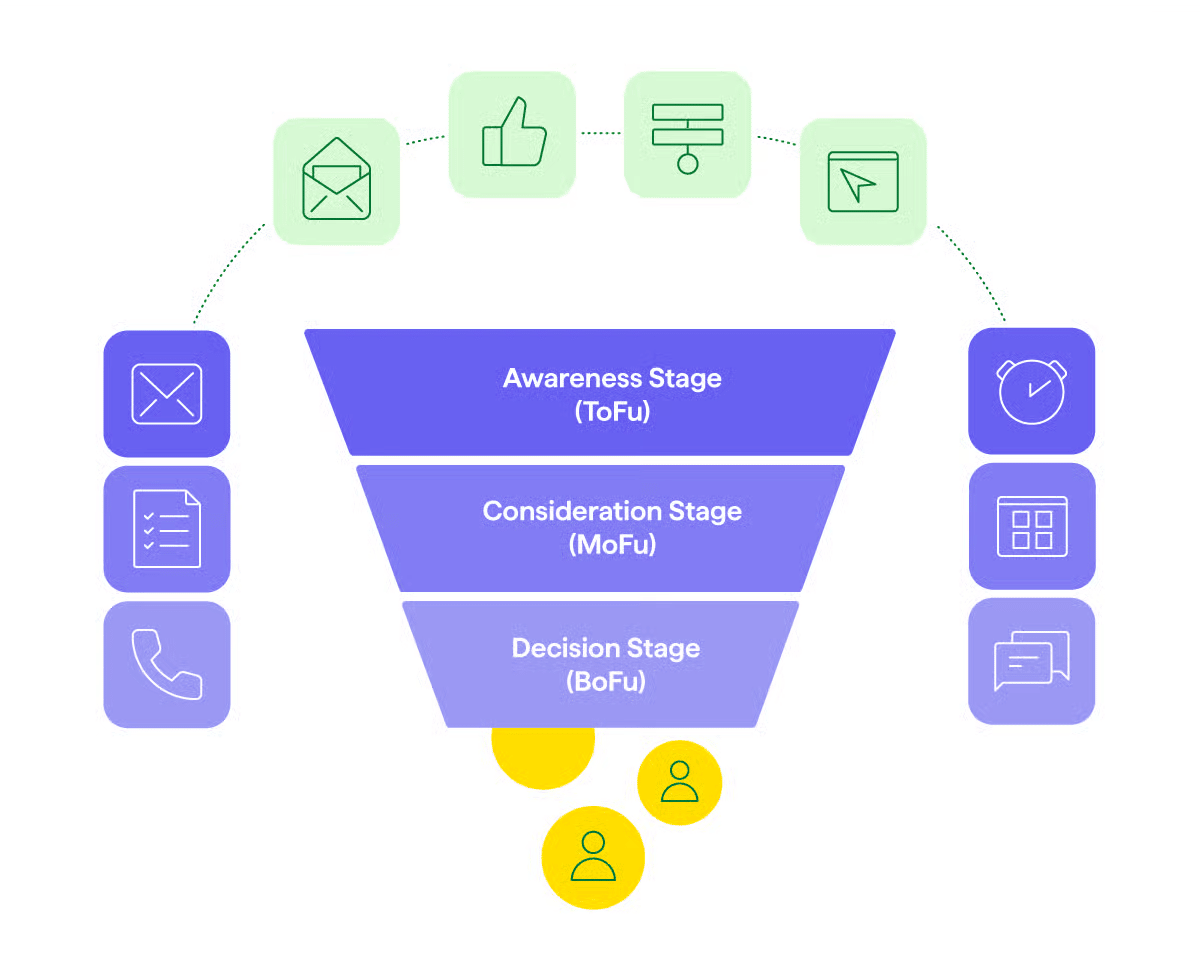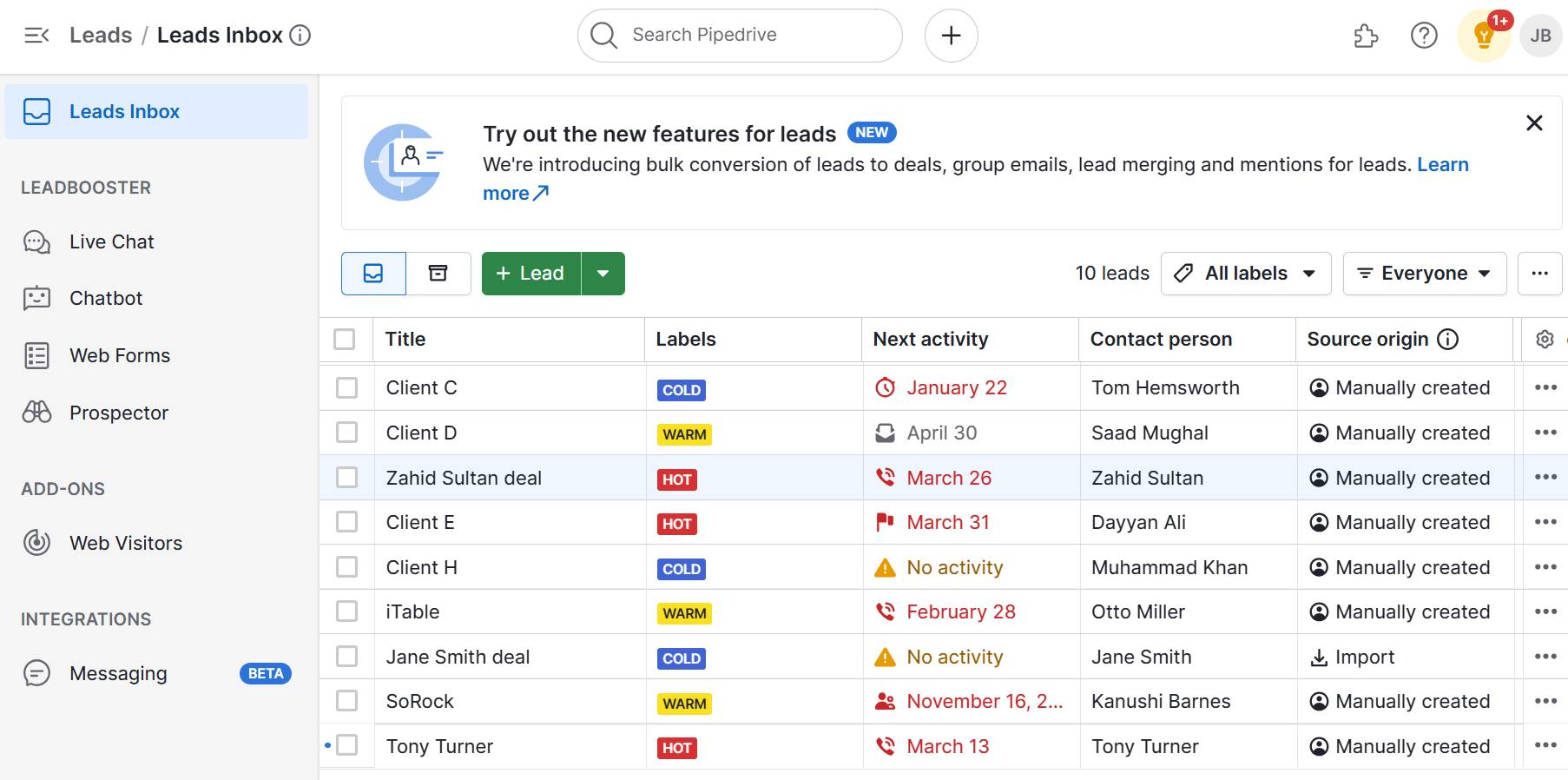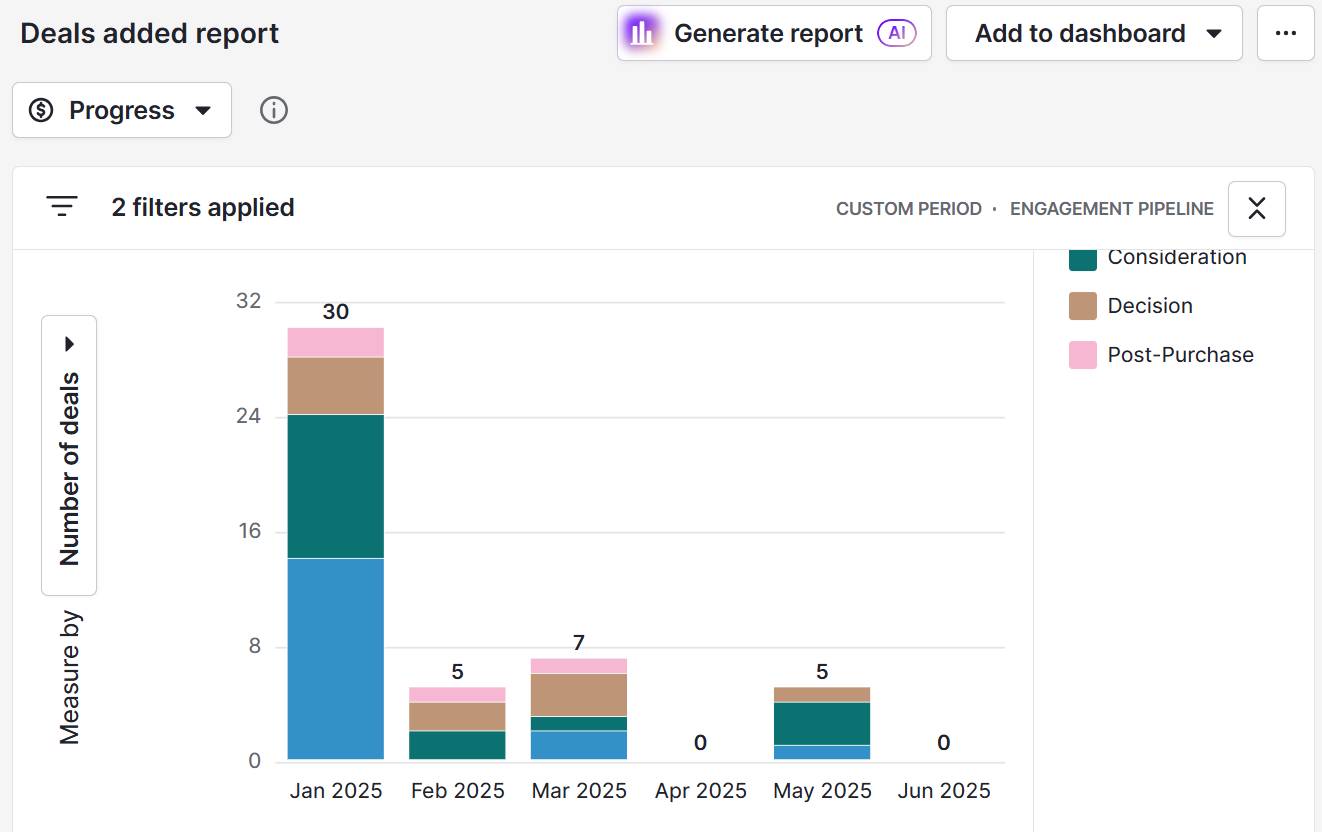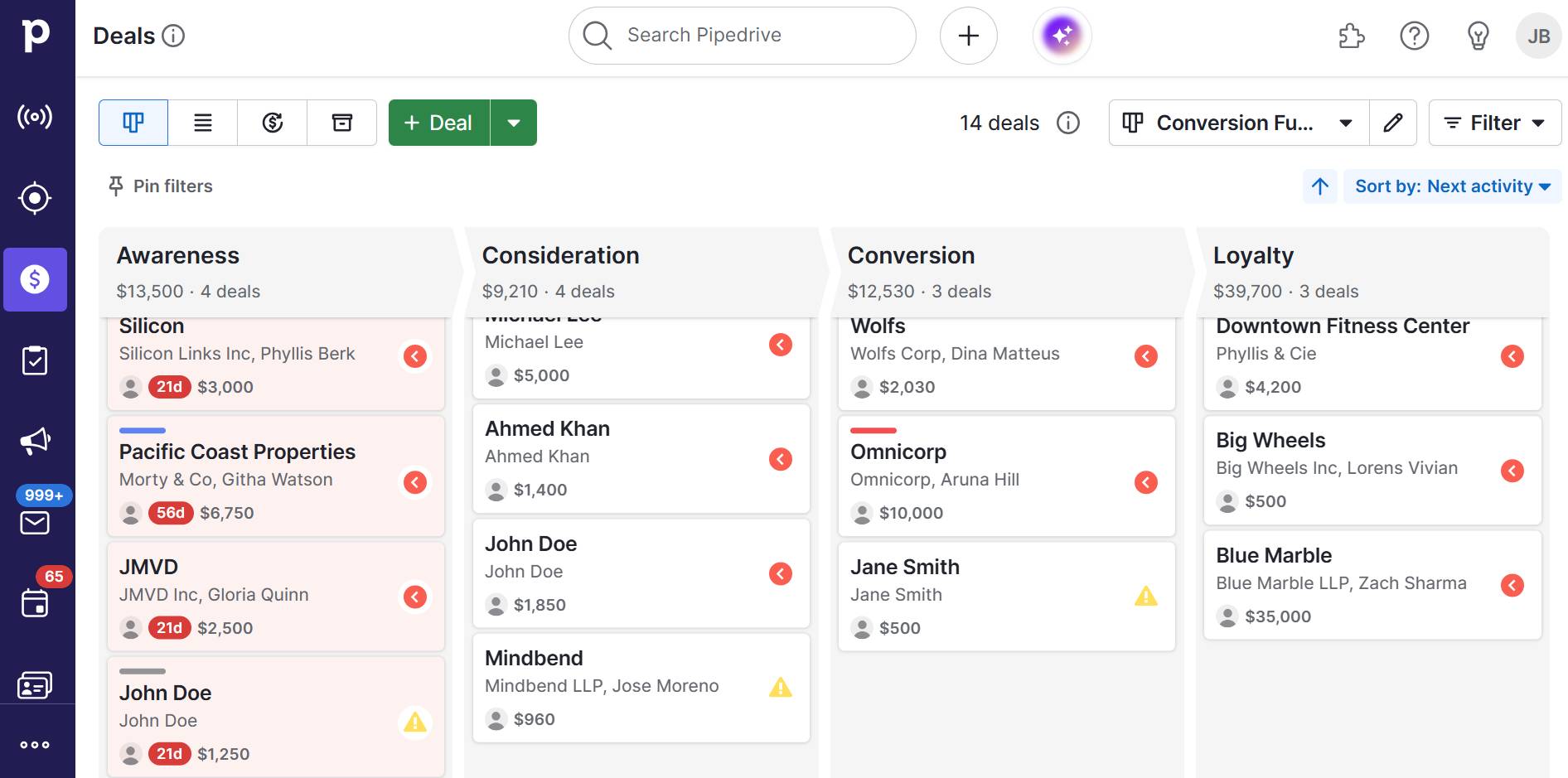A conversion funnel maps how prospects move from discovering your brand to becoming customers. The process helps you pinpoint where potential buyers lose interest so you can improve each stage and increase sales.
For SMBs with limited time and resources, tracking conversion funnels and identifying where prospects leave the buying journey can be challenging.
In this article, you’ll learn how to map and optimize your conversion funnel effectively. You’ll learn practical steps to identify drop-offs, craft targeted content, improve the user experience and use technology to boost conversions.
What is a conversion funnel?
A conversion funnel maps the buying journey from discovering your brand to becoming a loyal customer. Understanding the conversion funnel helps you identify where potential customers are leaving the buying journey and how to prevent this from happening.
Say you operate an e-commerce business. You create a conversion funnel and notice that many users visit your product page but don’t complete a purchase.
Using these insights, you make changes to the product page to increase conversions.
For example, you can improve your call-to-action (CTA), simplify the checkout process or provide clearer product information.
By making these changes, you address customer pain points, reduce friction and increase your chances of making a sale.
Conversion funnel stages
A conversion funnel includes all the key stages a potential customer moves through when deciding to make a purchase. Knowing what happens at each stage helps you guide prospects toward a desired outcome more effectively.
A typical sales conversion funnel includes the following stages:
Top of the funnel (awareness and interest stage). Prospects discover your business through ads, social media, search engine optimization (SEO) or word of mouth.
Middle of the funnel (consideration stage). Prospects engage with your brand by reading blog posts, downloading resources or attending webinars.
Bottom of the funnel (conversion stage). Consumers complete a purchase or take the key action you aim for, like downloading an e-book.
Post-purchase (loyalty stage). Happy customers become repeat buyers and brand advocates.

Here’s what a customer journey might look like in our e-commerce business example:
Top of the funnel. Sees a Facebook ad or finds your brand via Google while searching for “sustainable sneakers”.
Middle of the funnel. Browses your site, reads social proof, subscribes for a discount or reads a blog post on your eco-friendly materials.
Bottom of the funnel. Uses the discount code to complete their first purchase.
Post-purchase. Gets a thank-you email, leaves a review, receives a referral link and buys again with a loyalty discount.
Each stage is crucial in moving prospects closer to becoming repeat customers.
5 tips to create a successful conversion funnel
A successful conversion funnel guides your ideal prospects seamlessly from awareness to action. Focus on clear messaging, data-driven targeting and continual optimization to turn interest into measurable results.
Here are five practical tips for effective conversion funnel optimization:
1. Understand the customer journey for your target audience
Building a high-converting funnel involves understanding how customers interact with your brand. Aligning your funnel with buyer behavior helps you remove friction, personalize engagement and guide prospects more effectively toward a sale.
Here’s how to understand how customers move through the buying journey:
Map the customer journey. Learn how prospects discover your business and the path they follow before purchasing. For example, analyze key traffic sources (like ads, social media and referrals) and key touchpoints (such as landing pages or blog posts).
Identify drop-off points. Look for signs that prospects are losing interest or no longer engaging, such as low email click-through rates or high bounce rates. These moments highlight where your funnel leaks potential customers and needs improvement.
Gather buyer insights. Talk with recent customers and review sales conversations to understand their motivations, concerns and objections. These observations help you align your funnel with real buyer behavior to improve messaging and the buying experience.
These insights help you build a funnel that reflects how your ideal customers move through the buying journey.
Download our customer journey map template
How Pipedrive helps businesses understand the customer journey
Pipedrive’s sales CRM makes this process easier by tracking every touchpoint in your sales funnel through detailed CRM analytics. Segment your audience by behavior, deal stage or traffic source, making it easy to identify patterns that show what’s working and what’s not.
Here’s an example of how to segment an audience by categorizing leads as cold, warm or hot:

With real-time insights and visual sales pipelines, you’ll spot drop-offs quickly and make informed decisions to optimize every stage of the journey.
2. Craft targeted content for each funnel stage
Tailor your content to match prospects’ intent at each funnel stage. Content that fits their journey reduces drop-offs and builds trust, making it easier to guide them forward.
For example, at the awareness stage, educational blog posts or social media content introduce your brand and spark interest. In the consideration stage, pricing guides or case studies help prospects evaluate your solutions.
Here’s a breakdown of the different stages and the content types that work best for each:
Conversion funnel stage | Purpose and type of content |
Top of the funnel (awareness) | Focus on getting your brand noticed. Content should educate or entertain. Examples:
|
Middle of the funnel (consideration) | Build trust and highlight how your solution meets their needs. Examples:
|
Bottom of the funnel (conversion) | Give leads the final push to convert. Reduce friction and make the offer clear. Examples:
|
Post-purchase (loyalty) | Continue engaging with customers after the sale to drive repeat business and referrals. Examples:
|
Aligning your content strategy with the conversion funnel creates a seamless buying experience.
How Pipedrive helps you craft targeted content
Pipedrive’s CRM platform shows how your content performs across every stage of the conversion funnel. You can see which content pieces drive the most interest and conversions by tracking email engagement, website interactions and deal progress.
When you visualize how leads move (or stall) through the funnel, it’s easier to pinpoint content that’s working and where gaps exist.
For example, if deals slow down at the consideration stage, you might need stronger case studies, clearer pricing information or more social proof to build confidence.
These insights help you craft targeted content that directly addresses buyer hesitations and increases sales.
Here’s an example of how to view deal progress in Pipedrive:

With these insights, you can create relevant, high-converting content that aligns with each stage of the funnel and moves prospects closer to a sale.
Note: Pipedrive’s audience segmentation also lets you tailor follow-ups and messaging based on where leads are in the funnel. As a result, your content matches their current needs.
Learn more about Pipedrive’s email marketing software.
3. Simplify the user experience
A smooth, intuitive user experience keeps prospects engaged and increases the chances they’ll complete desired actions. When the buying experience is easy to navigate, people are more likely to stay on track, build trust and convert.
Imagine a visitor clicks on an ad and lands on a clean product page with a clear CTA. They fill out a short form and check out in under two minutes. The process is fast and simple.
Now imagine that the same user clicks on an ad but lands on a cluttered page with multiple CTAs, heavy text and a confusing layout. They’re unsure where to click. When they finally do, they’re taken to a lengthy form asking for unnecessary details.
The checkout process involves several steps, including account creation and email verification. Frustrated or distracted, they abandon the process before completing the purchase.
Here are some ways to avoid this scenario and create a smooth user experience:
Optimize landing pages. A focused layout helps visitors understand the next step instantly. Use clear CTAs to help users navigate the site and avoid overwhelming them with information.
Reduce friction in web forms. Long or complex forms create friction and can prevent potential leads from converting. Keep forms short and to the point, only asking for what you truly need.
Ensure mobile-friendliness. Optimizing your website for mobile means you create a user-friendly experience for the growing number of mobile users. The number of smartphone users is expected to grow by 1.8 billion between 2024 and 2029. Test pages and forms on mobile to ensure smooth navigation and responsive design.
Speed up load times. Fast-loading pages help users move through the buying process quickly, improving their experience and reducing bounce rates. Use tools like Google’s PageSpeed Insights to monitor performance and fix issues that cause slowdowns.
A simple, user-friendly funnel improves the customer experience and makes it easier for people to take action, boosting conversions with less effort.
4. Set metrics for success
Defining clear success indicators lets you see where your funnel performs well and where potential customers drop off. These insights help you make data-driven decisions, refine your approach and convert leads more efficiently.
Say you track your lead conversion rate. You notice that only 1% of site visitors become leads, which signals the need for improvement.
You decide to improve your call-to-action, use A/B testing on landing page layouts and simplify your website forms to increase conversions.
Here are some of the key sales funnel metrics for SMBs:
Metric | Definition |
Visitor-to-lead conversion rate | Measures how many website visitors become leads. A low rate may indicate that your landing pages or CTAs need improvement. |
Lead-to-marketing-qualified-lead (MQL) rate | Shows how many leads demonstrate genuine buying interest. If this number is low, you may need stronger lead nurturing or better qualification criteria. |
MQL-to-customer conversion rate | Reflects how effectively your sales process converts qualified leads into paying customers. A poor rate may signal misalignment between sales and marketing or gaps in your sales and marketing strategy. |
Calculates how much you spend to acquire a new customer. Keeping this cost low is essential for sustainable growth and profitability. | |
Average sales cycle length | Tracks how long it takes to convert a lead into a customer. A long cycle suggests friction in the process or the need for more targeted follow-up. |
Use these tips to identify the right metrics for your business:
Start with your business objective. Are you trying to increase lead volume, improve close rates or reduce acquisition costs? Choose the metric that best supports your business goals.
Look for bottlenecks. Identify where your conversion funnel stalls and track metrics that help you monitor improvements.
Tracking the right metrics prevents wasted sales and marketing efforts. Invest resources where they’ll have the most impact on growth.
5. Use technology to plot and track the funnel
Technology streamlines funnel management, making it easier for SMBs to organize sales data, track performance and act quickly. With limited time and resources, using the right tools ensures your funnel is efficient and measurable.
Consider marketing automation software as an example.
These tools help you nurture leads by automatically sending targeted emails, segmenting audiences and scoring prospects based on engagement. They track user behavior across your website and campaigns, providing valuable insights on where leads are in the funnel.
As a result, you can:
Pinpoint exactly which messages resonate at each stage
Identify where leads lose interest
Adjust your campaigns in real time
These adjustments keep prospects moving smoothly through the funnel, boosting conversions while maximizing your marketing ROI.
Take a look at some of the other technologies that can help you manage your conversion funnel:
Software | Definition |
CRM systems (like Pipedrive) | Track leads, deals and communication in one place. Visualize your funnel stages and spot bottlenecks in real time. |
Analytics platforms (like Google Analytics) | Monitor website traffic, user journeys and conversion rate optimizations (CRO) to see what’s working and where users drop off. |
Form and landing page builders (like Typeform) | Create high-converting entry points into your funnel with easy-to-use, mobile-friendly designs. |
Live chat and chatbot tools (like Pipedrive’s Chatbot software) | Engage visitors instantly, answer questions in real time and guide them to the next step in the funnel. |
Here are some features and functionalities to consider when choosing technology for managing your conversion funnel:
Ease of use. Select software with an intuitive, user-friendly interface that your team can quickly learn and use effectively. A simple system minimizes training time and reduces the risk of mistakes.
Customization. Opt for tools that allow you to tailor pipelines, sales stages and workflows to reflect your unique sales process. These customizations ensure your funnel accurately matches how your business operates.
Automation. Look for platforms that automate repetitive tasks such as sending follow-up emails, assigning leads to sales reps or scheduling reminders. This functionality saves time, reduces manual errors and keeps prospects moving smoothly through the funnel.
Live tracking and sales reporting. Choose software that offers live reporting so you can perform conversion funnel analysis in real time. These insights help you quickly identify bottlenecks or drop-offs and take action.
Integrations. Pick tools that integrate seamlessly with your existing systems, like email marketing campaigns or accounting software. Integration ensures all your data flows smoothly across platforms, giving your sales team a complete view of customer interactions.
Scalability. Select a solution that can grow with your business. As your team expands or your sales process becomes more complex, your technology should support more users, features and advanced analytics without losing performance or usability.
Choosing the right tools lays the foundation for long-term growth by streamlining your funnel, improving efficiency and boosting results with less effort.
How Pipedrive helps SMBs manage conversion funnels
Pipedrive’s CRM gives small businesses a clear, real-time view of the entire sales funnel. It centralizes all customer data so you can act quickly and move leads through the funnel more efficiently, even with limited time and resources.
The software also allows users to create custom pipelines. Plot your unique funnel stages in the system so you always see exactly where each lead stands.
Here’s an example of a custom pipeline that outlines the key stages of a conversion funnel:

Users can also assign tasks, set deadlines and schedule follow-ups for every stage, keeping your team accountable and proactive.
Why an effective conversion funnel is essential for SMB success
A well-structured funnel gives you visibility into each stage of the customer journey so you can prioritize high-impact actions, reduce drop-offs and convert more prospects with less waste.
Take a look at these benefits (and others) in more detail:
Maximize ROI. A funnel helps you focus time and budget on the channels, content and offers that drive revenue so you don’t waste effort on tactics that don’t deliver.
Identify where you’re losing leads. By tracking each stage, you’ll see exactly where potential customers fall off, allowing you to fix weak points quickly.
Support smarter decision-making. With clear data, you’ll know what messaging, channels and offers are most effective, enabling you to double down on high-converting strategies.
Scale with your business. A conversion funnel gives you a repeatable framework to guide new leads, support sales teams and test scalable tactics across your business as you grow.
Build long-term customer relationships. Post-sale stages (including onboarding, retention and advocacy) ensure a positive customer experience, encouraging repeat business and turning happy buyers into referral sources who recommend you to other prospects.
An effective funnel gives your SMB the structure to grow sustainably, build loyalty and grow your business.
Final thoughts
Understanding and optimizing the conversion process helps you guide prospects from awareness to action with less friction and more impact.
To get started, review your current funnel and look for areas where leads drop off. Use those insights to adjust your content, simplify the user experience and apply tools that help you work more efficiently.
With features like visual pipelines, custom stages and automated follow-ups, Pipedrive helps you streamline every part of the funnel and turn insights into results. Sign up for a free 14-day trial to see how Pipedrive can simplify your sales process and boost sales.







